Content
Rowan Titan is a varietal hybrid plant. The variety was developed by crossing apple, pear and mountain ash. As a result of selection work, a small tree with a round crown, small leaves and sweet round fruits was obtained. Rowan berries are eaten, made into tinctures and jam.
Description of rowan Titan
Poets of the Silver Age dedicated poems to this tree. Rowan is familiar to everyone; it is planted in parks, alleys, gardens and summer cottages. Many varieties of red rowan have been developed, each of which is unique.
According to the photo, the rowan of the Titan variety has small leaves, which by autumn change color from dark green to crimson-red. The crown of the tree is of medium density, through which the branches are visible. In the sun, rowan leaves shine beautifully.
The plant blooms with small white and beige flowers in early June. During flowering, a faint pleasant aroma is released.
In late autumn, the red fruits ripen and can be eaten fresh or cooked. The berries are used to make healthy jam, marmalade, alcohol tinctures and much more.
The Titan variety is resistant to temperature changes and prolonged drought, and is not attacked by insects and harmful parasites. The culture is unpretentious in care and does not require constant pruning of trunks and crown formation.
It is recommended to grow it in fertile soils, away from wetlands.
Pros and cons of the variety
The variety has an impressive list of advantages:
- decorativeness of leaves;
- annual fruiting;
- high productivity;
- excellent taste of berries;
- duration of storage of ripe fruits without processing;
- resistance to drought and various diseases.
Titan's root system is not suitable for swampy soils: when planting a young plant, this feature should be taken into account so as not to ruin it.
Planting and caring for fruit rowan Titan
It is recommended to plant the fruit tree in sunny or slightly shaded areas. The Titan variety prefers moderately moist soil that does not retain moisture. The soil for dissolution must be fertile and loose: sandy, sandy loam and loamy soils are considered ideal.
The tree is planted in the spring so that by autumn the young seedling will become stronger and easily survive the first winter.
The hybrid is unpretentious in care. For proper development and formation, regular procedures are necessary:
- moderate watering;
- loosening the soil;
- weed removal;
- feeding and prevention against insect pests.
Before planting, carefully remove debris from the area and break up the earthen clods.
Preparing the landing site
Before planting rowan of the Titan hybrid variety, it is necessary to carry out preparatory work with the soil. The soil must be clean, without old roots and stones.All organic matter, when rotted, can harm a young tree.
The soil for rowan must be nutritious. To do this, add superphosphate or other mineral fertilizers to the hole.
For better drainage, add gravel or sand to the prepared hole before planting. This will improve water drainage from the roots and prevent them from rotting.
Landing rules
To plant, you need to carry out simple preparatory work:
- dig a hole with a diameter of 50 - 60 cm;
- add sand for drainage;
- apply mineral fertilizers.
The distance between plantings should be at least 5 m, since rowan over time develops a powerful root system and a spreading crown.
Having placed the seedlings in the planting hole, it is necessary to straighten the rhizomes and sprinkle them with soil, leaving a growth point on the surface.
The earth is carefully trampled down and watered. To prevent the plant from bending, hold the trunk.
Watering and fertilizing
Rowan variety Titan prefers moderately moist soil, without stagnant water. Rare watering is not detrimental to the tree, since the variety is drought-resistant.
In hot summer months, the plant needs proper watering. To prevent the root system and crown from dying from a lack of life-giving moisture, the tree is watered with 1 bucket of water per 1 square meter. m of deciduous crown.
A fruit-bearing tree responds well to fertilizing. Fertilizers are applied in spring and autumn. Rowan is fed with urea, ammonium nitrate, mullein, phosphorus and potassium.
Trimming
The hybrid does not need regular pruning, as the tree grows with a beautiful spherical crown shape.
Pruning can be done to maintain the growth of the plant by cutting off excessively long branches.
The first crown formation is carried out in the spring.Gardeners remove old and dry branches, stimulating the development of new side shoots.
Repeated pruning removes side branches to give the desired decorative shape.
Preparing for winter
The hybrid tolerates wintering well, so the crown is not protected from low temperatures and snow.
However, for prevention, it is recommended to take care of the tree trunk and cover it with protective material.
At the end of autumn, the soil near the trunk of the Titan rowan tree is mulched with peat or sawdust.
In winter, the tender bark is often eaten by hares and field mice, so the trunk is wrapped in rags, polyethylene and other covering material.
Pollination
Rowan blooms at a time when nature has not yet fully woken up after winter sleep.
To form berry ovaries, the hybrid does not need bees, bumblebees or wasps, since the Titan variety is self-fertile. This tree can be planted in a single copy and not worry about cross-pollination. Every year, rowan of the Titan variety pleases with a bountiful harvest.
Harvesting
At the end of summer, the time for rowan berries to ripen comes. The ripeness of fruits is determined by their appearance. Those berries that are completely colored in a rich burgundy color are considered ripe.
The clusters with the red ripe harvest are carefully cut off with pruning shears and the berries are separated from the stalk with your hands.
It is recommended to take care of birds and squirrels that feast on rowan fruits in winter. A few bunches of berries are left for the animals. Thanks to the reserves remaining on the tree, hungry birds and rodents survive in the winter.
Diseases and pests
The Titan variety is not predisposed to a number of classic diseases of rowan trees:
- powdery mildew;
- anthracnose.
Even fruit rot does not damage the leaves and berries of Titan.
Despite the strong immunity, ticks, caterpillars and other harmful insects live on the leaves and branches of rowan.
For prevention purposes, it is recommended to treat trees with special means at the beginning of the growing season - in the spring.
Reproduction
A fruit tree is propagated in three known ways:
- seed;
- cuttings from an adult tree;
- layering.
The most popular and effective method is to plant young plants using cuttings.
Procurement of planting material begins in early September. The branches are cut off from an adult rowan tree, the cut is sharpened with a knife and placed in water to form a new root system.
After 30 - 40 days, white roots appear, and this means that the cutting is ready for planting.
Conclusion
Rowan Titan is an unpretentious garden tree. Fruit-bearing plants are planted not only to decorate the garden plot.
The red fruits of the Titan rowan are rich in vitamin C and carotene. They are used as food to strengthen the immune system. Pies and various drinks are prepared from rowan berries. When canned, red berries do not lose their beneficial properties. Men prepare tinctures and liqueurs from rowan fruits.
On the site the tree grows about 3 m in height. The crown grows sparsely and roundly. The leaves of the Titan variety are decorative. In the sun they shimmer and shine like thousands of small mirrors.
According to the description of the variety and numerous photos, the flowering of red rowan Titan begins in mid-June. Small white flowers bloom on the branches, which have a pleasant and subtle aroma.
The root system of the hybrid is susceptible to rotting, so it is important to maintain moderate watering.
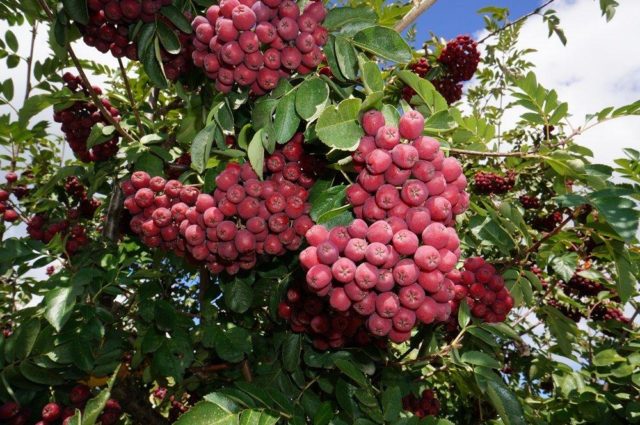
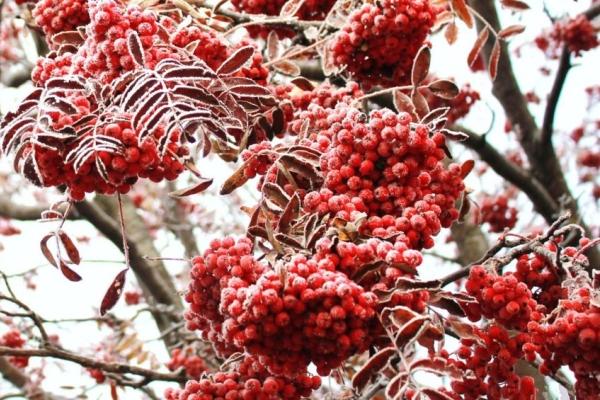
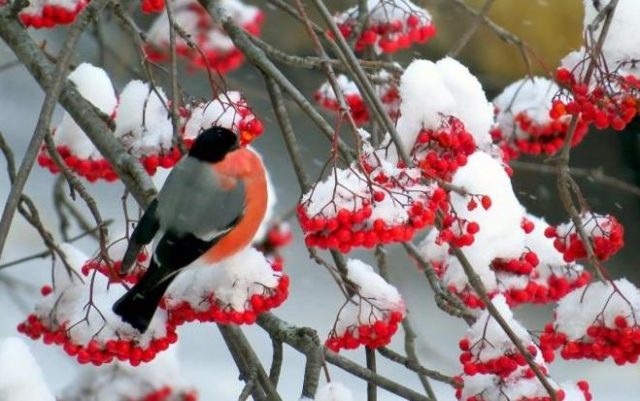
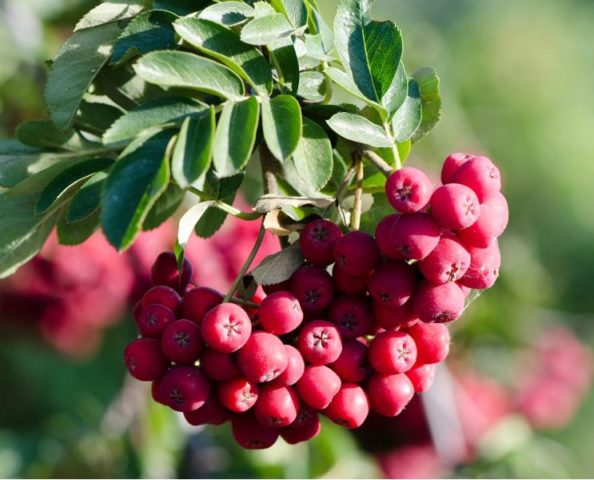
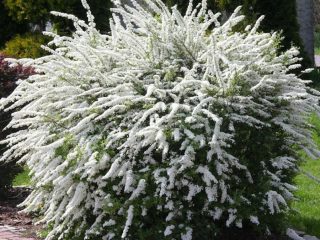
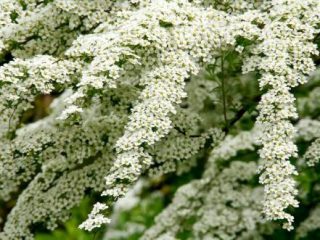
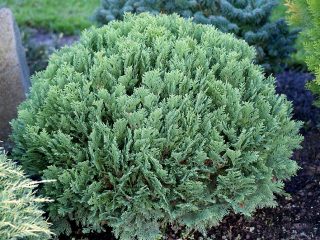
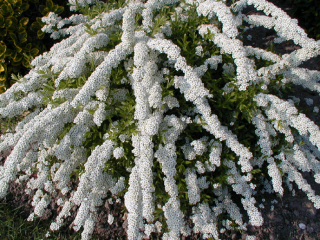
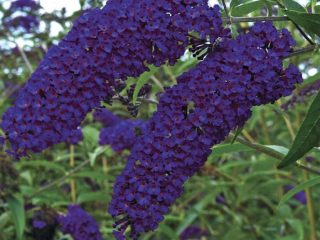

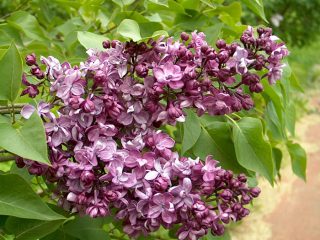
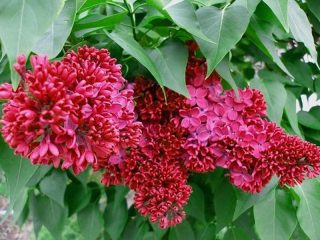

Great site! Detailed descriptions of varieties.